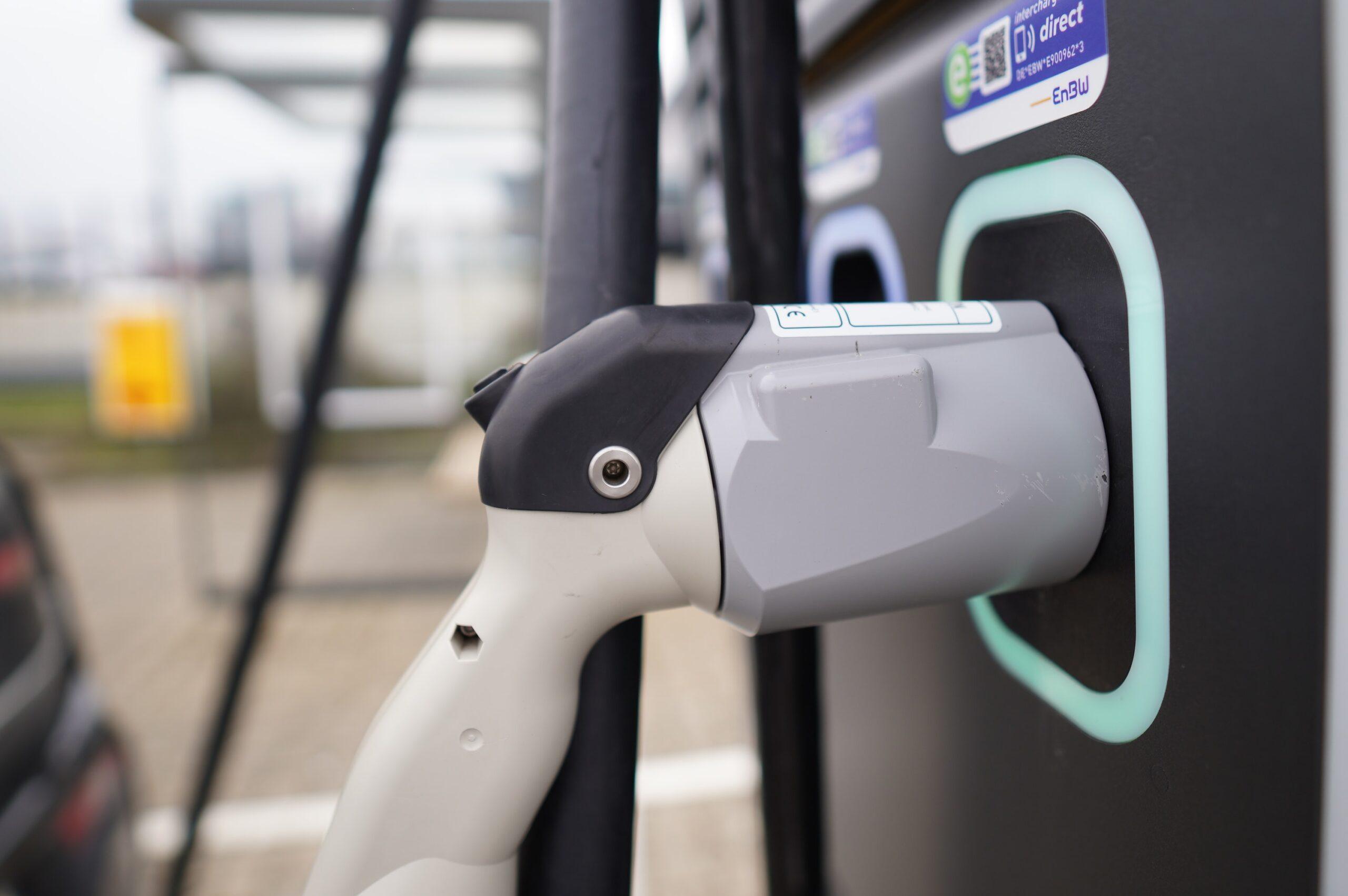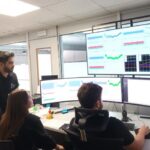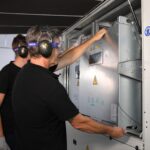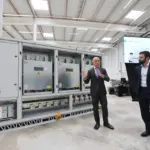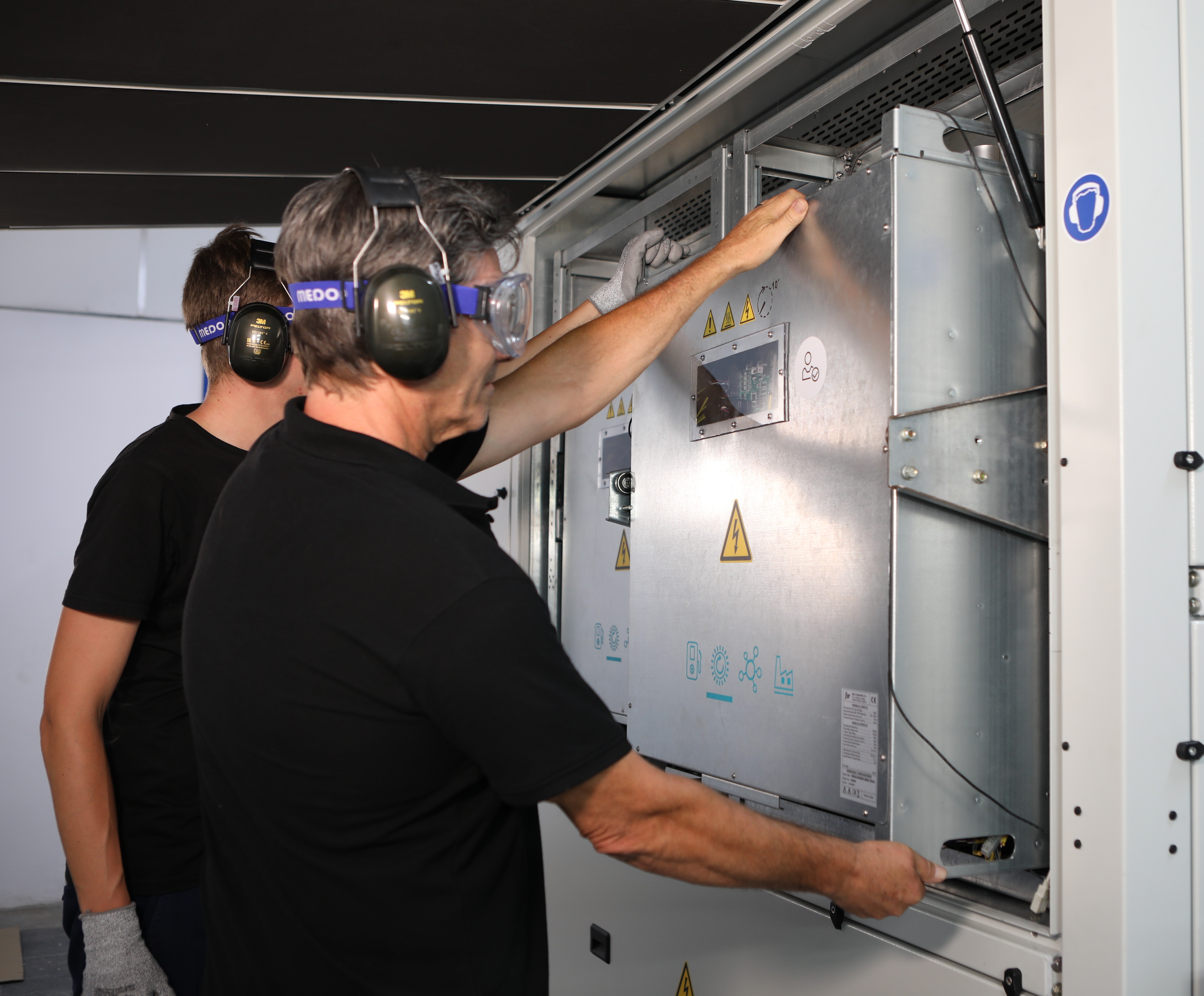The global demand for electric cars will multiply by six between 2021 and 2030, according to one of the latest reports by the consulting firm McKinsey. However, in order to meet this demand, it is necessary to prepare the electric infrastructure in service areas. We face the challenge of providing solutions to the high number of petrol stations in isolated areas with poor network coverage. In this article, we take a closer look at how ZGR is offering comprehensive solutions to gas stations for their transformation into electric filling stations, providing answers to one of the main challenges of electric mobility today.
As important as it was, the first industrial revolution, from, using animals for transporting, to using combustion engine vehicles, the revolution we are currently experiencing is even greater. The mobility revolution is marked by four major vectors:
- Electrification
- Decarbonisation
- Digitalisation
- Globalisation
Towards the development of new business models
The electric vehicle is not only at the heart of more sustainable mobility, but also of greater driving autonomy. The connectivity that comes from digitization will enable the development of smarter and more value-added services, from the autonomous car to new software that will generate new disruptive business models.
All of this is developing quite rapidly, so it is important to keep a close eye on this and to help the automotive sector in this deep industrial reconversion.
To get an idea of what is to come, a few facts are enough. Global demand for electric cars will multiply by six between 2021 and 2030. This is what the prestigious consulting firm McKinsey & Company estimates in one of its latest trend reports, in which it states that: “Electric vehicles, which now represent a small portion of vehicles sold, are at an inflection point and are responsible for much of the excitement within the capital markets”.
The consultancy estimates that by 2021 – 2030, annual electric car sales will grow from 6.5 million to 40 million by the end of the period.
Electric car stations, the challenge of electric infrastructures
However, for these estimated growth to become a reality, three elements that currently limit the growth have to be resolved:
- Raw materials to manufacture batteries: mainly Lithium, Nickel and Cobalt. This means solving current supply problems. Also the improvement of efficiency in the use of these limited resources, the recycling of those elements that are at the end of their useful life and, in parallel, the identification of new sources and materials for the generation of batteries.
- Insufficient number of gigafactories: These are the factories that produce batteries. More gigafactories, larger and more efficient and productive, are needed to cover the estimated demand for batteries in the coming years. Right now there is a race on in this area, especially in terms of Europe’s self-sufficiency and non-dependence on Asia.
- The electric charging infrastructure that needs to be built: To keep up with the number of electric vehicles on the road.
At a time when electric mobility projects are just starting to be launched, if there is no charging infrastructure, the expected development of the electric car will not occur due to the need for charging points to make it convenient and operational in the day-to-day life and activity of citizens.
This last point (the need for a ready-made electric infrastructure) is possibly the least known and perhaps one of the most complex. Let’s stop on it to explain in a little more detail.
Charging Stations and Service Areas. How can we maximize their electric potential without increasing their costs?
This is one of the main issues: How can we maximize the network power of current petrol stations, in order to transform them into petrol stations, without increasing their energy costs?
 First of all, by providing solutions adapted to each need, in each particular context, because service areas in isolated areas with scarce electricity network coverage do not have the same needs as those in urban areas. We will discuss both cases.
First of all, by providing solutions adapted to each need, in each particular context, because service areas in isolated areas with scarce electricity network coverage do not have the same needs as those in urban areas. We will discuss both cases.
Solutions for electric filling stations in isolated areas with poor grid coverage
In isolated areas, one of the first measures to be taken for electricity repowering is the construction of renewable energy plants linked to the service station. For example, solar plants complemented by battery storage. This is essential to make up for the lack of grid power.
Solutions for petrol stations in areas with good grid coverage
In these cases, a photovoltaic generation plant may or may not be installed, because there is a grid and there is no need for it, unless the ROI analysis indicates that it is convenient to install it. This would be done to minimize costs and gain in energy self-sufficiency. In this case, it is highly recommended to carry out a good study of investment costs and amortization beforehand.
The potential market for electric mobility needs petrol filling stations at service areas
According to a recent study by McKinsey & Company, there are almost 25 million cars in circulation in Spain and the sector employs 2M people.
Another fact: transport is responsible for 28% of greenhouse gas emissions. Therefore, it is important to focus innovation on finding solutions to achieve the objective set by the European Union: to reach zero net emissions by 2050.
In Spain there are almost 25 million cars in circulation and the sector employs 2M people.
But the automotive industry is also one of the pillars of the Spanish economy. It represents 10% of GDP and exports 80% of its production.
Overall, there are 15 technology centres and 10 automotive clusters throughout the country that provide innovation and various services to the sector.
But, at the same time, major global manufacturers such as Renault, Mercedes-Benz, Ford, Volkswagen, Seat… have production plants with a high level of automation in our country. Some of these large groups are investing heavily to create giant factories in Spain which, in turn, become knowledge clusters for the development of a new local industry.
In order to make significant progress in sustainable mobility, initiatives must be developed in the following areas:
- Research, technological development, and innovation in batteries
- The efficiency of gigafactories,
- The empowerment of the electric infrastructures that support the electro-power stations of the future.
In general, it involves developing aggregated business models. Open innovation or cooperation between the various agents in the value chain will be very intense.
ZGR Corporación’s lines of work in electric mobility
At ZGR Corporación we are working on various lines for the advancement of electric and sustainable mobility. Here is a list of the most important ones:
A). Line of work for the advancement of the electro-lighting stations:
In this line we are developing different initiatives:
- Design, development, and manufacture of intelligent chargers for electric charging stations, using modular systems from 50 KW to 400 KW.
- Systems for the repowering of service stations, incorporating photovoltaic (solar inverters) and hybrid storage in batteries, posts, and pantographs, among other equipment.
- Alliance with Nicolás Correa Distribution (NCD) for the development of electric mobility projects, incorporating software and electrical technology for monitoring and control, both for the consumer who recharges his electric car and for the service area that provides the energy.
B). Line of work in gigafactories:
- ZGR is part of Mercedes-Benz’s PERTE to develop and manufacture premium electric MPVs.
C). Line of work in the supply of raw materials:
ZGR Corporación has submitted various proposals to the Basque Government and other administrations to promote collaboration networks between SMEs for the purchase of basic strategic supplies.
In conclusion, the repowering of service stations is one of the most important issues for accelerating the use of electric cars. The conversion of petrol stations into petrol stations depends on this energy repowering.
ZGR has solutions for converting petrol stations into electric filling stations. We develop solutions that make the most of natural resources, maximize efficiency and reduce investment.
If you are in the energy and electric mobility value chain, give us a call and let’s talk. We will be happy to talk and discuss all the initiatives we can do for you. Contact us!
And if you want to know more about us, you can follow our activity on LinkedIn.
References:
McKinsey & Company report “The second great inflection point of mobility”.
McKinsey & Company Report “Towards sustainability: Some ideas for the Spanish automotive industry”.
Sernauto Report “The automotive sector: An industry committed to the future”
